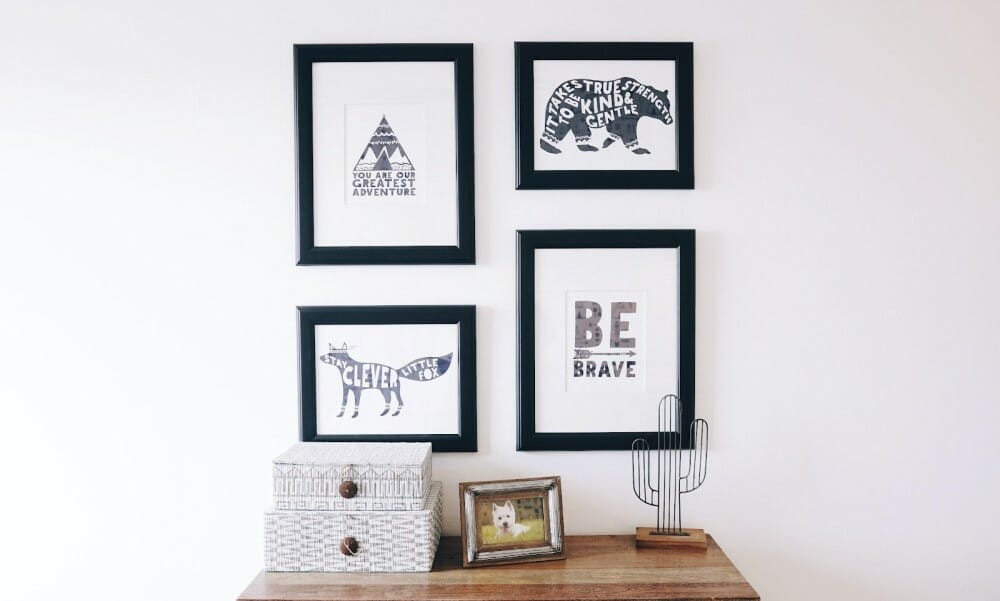Dec 23 2021
How To Safely Store Photos & Paintings
Whether you're moving to a new home or simply redecorating, you may find that your home is filled with more artwork and precious memories than you have room to display. This guide will show you how to safely store your photos and paintings so they can stand the test of time with ease.
Proper preservation actually requires careful consideration and storage, not just wrapping in some old newspaper to chuck in your garage. For paintings, this means storing in specific conditions that won't devalue the artwork, while for photos it means protecting important memories from wear and tear so you can continue to cherish them.

How Do You Store Paintings In Storage?
The biggest risk for storing paintings is actually accidental damages by yourself or other people who may have access to the artwork. These potential damages include breakages, tears, smudges, fingerprints, stains, or marks from skin or eating/smoking/cosmetics. Contamination from these materials can also mean attracting pests that can wreak havoc on your art. Damages less contingent on human error are damp, intense light, and using the incorrect storage materials.
Risks To Consider
Some considerations to help decrease the likelihood of damages include:
- Only carrying one painting at a time as opposed to stacks of smaller paintings. This is primarily to avoid the paintings moving around on top of each other and scratching each other in this process.
- Ensure you carry your paintings with one hand on each side of the frame. When carrying with one hand by your side you risk the chance of the side of the frame coming away and the artwork falling to the floor.
- To avoid all nasty stains and smears make sure you wash your hands thoroughly before touching your painting. If your painting is particularly valuable you may want to even consider wearing cotton gloves during handling.
- Make sure you aren't wearing any rings, watches, bracelets or other jewellery that can snag or damage the painting.
Cleaning Your Painting
Now that you're aware of the necessary precautions, it is worth carefully cleaning your painting before storing it. This can be easily and gently done by dusting its surface to remove any residual dirt and dust that can cause permanent damage if sealed with the painting long-term. It is recommended this is done by using a brand new, clean, soft hair paint brush to dust the surface of the painting without applying any pressure. The painting should be placed on a soft surface, like a cushion, and then dusted by brushing in one direction all over followed by the opposite direction.
For more valuable or fragile paintings it can be worthwhile investigating the services of a professional painting conservator.

Preparing Your Painting For Storage
Since your painting has been properly dusted and is prepared for packing, it is time to wrap it to protect it against common risks. The best way to preserve canvas paintings is to avoid unnecessary contact between your skin and the painting itself by wrapping it in plastic wrap. This should be done very lightly around the frame so as to leave a gap between the canvas and the plastic wrap - you do not want the plastic wrap to be touching the canvas in any spots.
Once wrapped carefully in plastic, it is best to place polystyrene foam around your painting using custom cut-outs you have made to fit your painting exactly. Now that it is both supported and cushioned you can place it inside a high-quality double-corrugated moving box. Fill up the rest of the box with bubble wrap so as to fill any empty space and prevent the painting from moving during transit.
The box can then be sealed and of course marked as "Fragile" to ensure extra care is taken.
How Do You Store Unframed Paintings?
To store unframed paintings, you can use a silicone release paper to cover the front of the painting and then wrap the entire painting the same you would a framed painting.
How Do You Store Big Artwork?
The same preparation needs to occur for larger artworks as for smaller paintings. However, if your painting will not fit inside a cardboard box it should still be wrapped, padded, and stored vertically with no external pressure placed on it.
What Is The Best Way To Store Acrylic Paintings?
It is imperative that paintings are stored in a climate-controlled storage unit. This means choosing a reputable storage facility such as Loxon Storage that can protect your painting against heat, cold, camp, humidity, pests, fluctuating temperatures, and security risks.
If you would like to save space by not storing your paintings in their individual boxes you prepared them for transit in, you should ensure your paintings are stored on their side. If you are going to store them flat or stacked against each other, they must have padding between them. It is incredibly important that they are not left on the ground as both frames and canvases can absorb dampness from concrete floors and become distorted.
If you are storing a large number of paintings it may be worth investing in a painting rack.
How Do You Organise And Store Old Photos?
Family photos are priceless and can provide irreplaceable memories. That is why it is so important to ensure they don't fall victim to wear and tear from being haphazardly stored. Though some may be proudly on display or in photo albums around the home, it is important you know how to preserve your boxes of spare photographs.
To organise your photos for storage it is recommended that you first make digital copies of all your images so there is no chance of losing any important memories. These digital copies can serve as backups in case the originals ever get damaged.
The best way to store photos is to purchase a sealable water-resistant container, such as plastic, with soft but stiff dividers to organise your images. A great example is using file folders as dividers that you can label, or archival presentation photo sleeves that can keep your photographs clean and fingerprint free.
To preserve the quality of your photos it is also important that you:
- Keep your photos flat
- Ensure your photographs fit into their boxes without any cramming or stuffing
- Fill extra space in boxes with non-acidic tissue paper
- Consider using non-acidic dividers between photographs to avoid photos sticking to each other

When storing your photographs long-term it is also important that they are packed into a storage unit that is well-ventilated, temperature regulated, lacks moisture, and does not have any harsh lighting that can cause fading.
Where To Store Your Paintings & Photographs
Loxon Storage adheres to all the requirements for proper painting and photograph storage. Loxon provides easy, secure, and affordable storage you can trust. For storage enquiries, contact us today or locate your closest facility.




